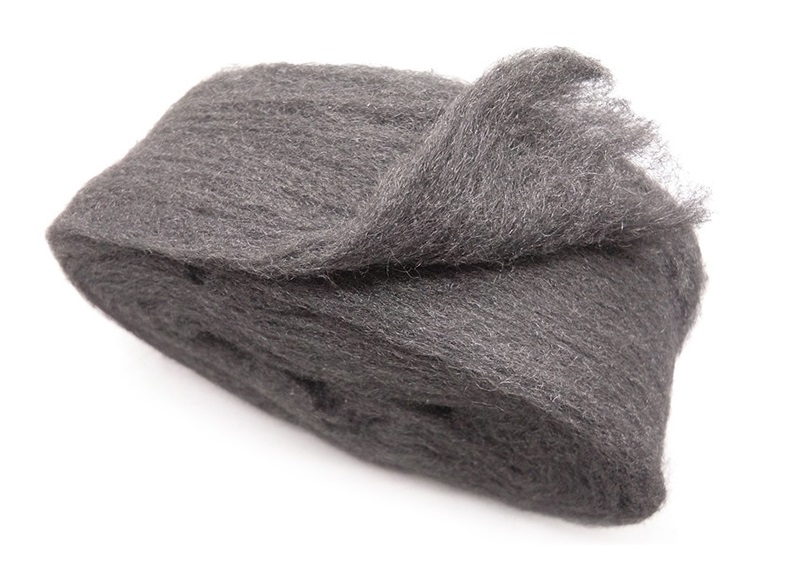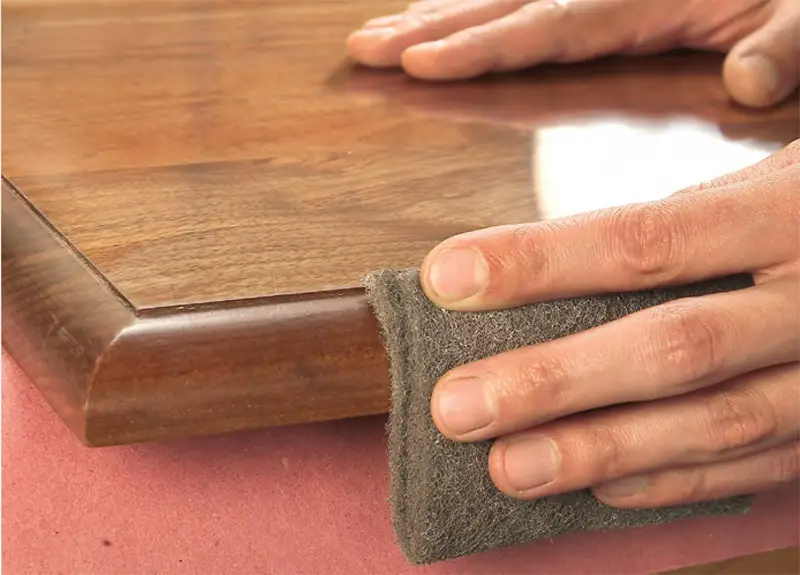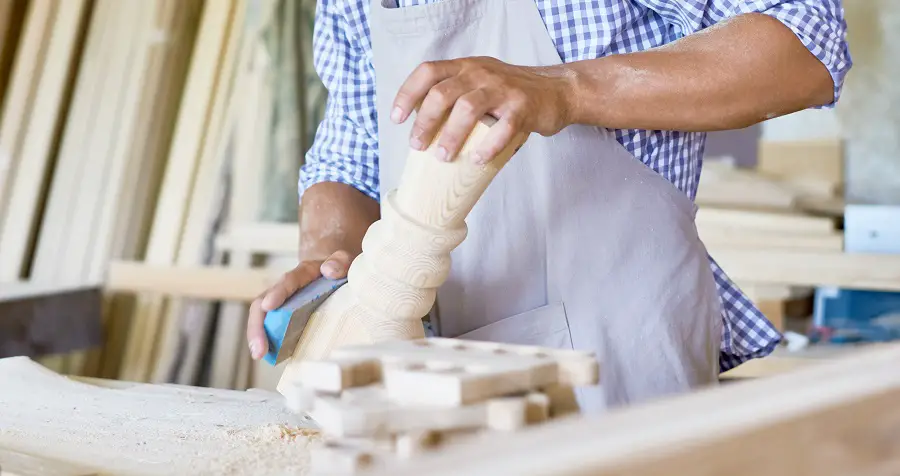These are materials used in woodworking and finishing that I've known for decades and because I'm so used to them I feel like everyone knows them. So it was with steel wool, which I've mentioned a few times in articles without further explanation. The other day I was asked what this wool is and what it looks like and I realized that part of my explanation of antiqued finish or polishing were not understood. That's why the subject of the article is steel wool, a polishing material with which very delicate work can be done.

What is steel wool
Wool steel is certainly not wool in the usual sense of the term, and sometimes it's not steel either 😊 A carpenter tells the story of how, as a child in his father's carpentry shop, he asked his father what wool steel was. "The wool that steel sheep give," was the reply. All joking aside, steel wool is a material that looks like processed (drawn) sheep's wool, but whose very thin threads are metal. The wires can be carbon steel (low carbon), aluminium, bronze, stainless steel and even plastic. The wires have sharp edges, the steel wool acting as a abrasive material for sanding of fineness.
Fine metal wire has been used for grinding since the 19th century, when mechanics discovered that the fine metal shavings from machining could be used to clean metal. As a product, it was first registered in 1896. After World War II, it began to be used extensively in kitchens for cleaning aluminium dishes. Now it is used in woodworking, metalworking and jewellery processing.
Like sandpaper, steel wool comes in many varieties. The wire can be of different thicknesses, with the processing being finer or coarser, depending on the size of the wire. As it is used for fine grinding and polishing, the wire thickness is not very large even for those considered coarse. Numbers are used to identify the type of wool. Coarse is numbered from 1 to 4 (some brands have 5), where 1 is the finest and 5 the coarsest. Very fine steel wool is numbered 0. As here too there are several degrees of fineness, the finer the wool is processed, the more zeros there are. There are 4 types of such wool, from one zero (0) to four zeros (0000), the latter being the finest. The thickness of the yarns ranges from 100 μm for steel wool number 4 to 25 μm for steel wool number 0000.
The main uses of steel wool are sanding and polishing
Steel wool is used for removal of a very thin layer of material from the surface of an object. The thickness of the layer removed depends on the fineness of the wool, therefore coarse wool is used for sanding and fine wool for polishing (polishing).
The biggest advantage of steel wool sanding is that it moulds to the shape of the object to be sanded. Bits, hard-to-reach places, carvings are much better and easier to sand with steel wool. When sanding with wool it's good to wear protective gloves because the thin metal wires make very fine cuts on the skin, cuts you sometimes only spot when you wash your hands.

Depending on the fineness, steel wool can be used both for sanding wood and for sanding between layers or at the end. It is used on wood when you want to obtain very finely worked wood (guitars, sculptures, decorative objects). It starts with coarse paper and then is increased in fineness to steel wool. Steel wool cannot break the coarse, hard grain of raw wood, so it does not yield if it is used from the start of sanding.
The sanding between layers is used especially when the finish will be very glossy. Sometimes the fine curls that appear after traditional paper sanding become visible at the end because the high gloss lacquer accentuates any defects. The wool removes a very fine layer of varnish and the scratches are so fine that they are invisible. It does, however, leave behind fine metallic dust and small bits of grain, so the surface needs to be wiped and cleaned very thoroughly, especially if the large pores of the wood have not been completely covered (sealed) with varnish. It goes without saying that the use of wool is recommended when sanding between coats on objects with more difficult shapes, narrow places, edges and carvings.
Very fine wool (0000) is used for polishing and for removing skates. The very fine threads remove excess material without scratching the lacquer or primer and the appearance of the piece remains very beautiful. If the furniture is very shiny, and this is no longer to our liking, the gloss level can be reduced by using 00 steel wool. Sand the entire surface evenly, giving it a very nice satin finish.
When it is not recommended to use steel wool
Not recommended for sanding oak and other tannin species because tannin reacts with ironresulting in blue or black stains that stain the wood. If bronze or stainless steel wool is used, this phenomenon does not occur. Sometimes in the large pores of the oak Very small pieces of the metal wires may remain and look ugly after varnishing. If sanding has been done with steel wool, clean up very, very thoroughly by wiping and vacuuming off the resulting dust.
Steel wool is not recommended for sanding between coats of water-based products. Any metal dust, however small, left on the surface will rust in contact with water and stain the finish. In general, steel wool is not recommended for water-based products. Only bronze or stainless steel can be used.
There are specialists who do not recommend sanding between coats with steel wool, even if the products are not water-based. If the primer builds up during application orange peel, the wool does not have the power to remove the entire wrinkled surface of the primer and the finish will not come out very well, especially in high gloss finishes. It is recommended that, at least for the first coats, sanding should be done with the appropriate sandpaper, leaving the last coat, the one before the final lacquer coat, to be sanded with steel wool.

Other uses
Steel wool can be used for refinishing table tops or wooden furniture. Use furniture wax and steel wool with 00 and 0000. Using 00 wool, apply wax carefully along the grain. The application is made in successive passes until the applied layer is uniform and has penetrated well into scratches and defects. Then polish the wax with 0000 wool. Polish along the grain without circular movements. Go evenly over the entire surface so that the gloss is uniform. This kind of polishing takes time and effort, but if you use a quality wax, the result will be very beautiful and long-lasting.
Steel wool is also used for theartificial ageing of wood. The method is described at length here.
Because it is fine and does not scratch, very fine steel wool is used to remove paint stains from glass surfaces (windows, tables). You can use it to remove any difficult stains from glass surfaces.
I hope you find the information useful. Because I am convinced that there is still room for additions, I ask those who have also used steel wool otherwise to share their experience with us. Those who have questions can leave them in the space below. I promise to answer each one.



























Congratulations on the "Wooden Magazine"!
Thank you!